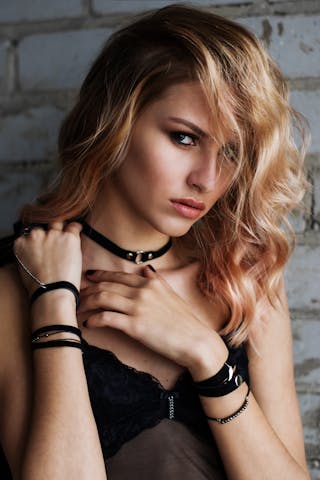Creating An Asexual Character For TV Showed Me We Have A Way To Go
Have you ever noticed how asexuality is often overlooked or misrepresented in TV shows? It's a real challenge for writers and producers to accurately portray asexuality without falling into stereotypes or clichés. But fear not, because there are resources out there to help educate and inform. If you're looking to understand more about asexuality and how it can be portrayed in a more accurate and respectful manner, check out this informative article on datinghelpus.com. It's time to start giving asexuality the representation and recognition it deserves.
When I first heard about the introduction of an asexual character on a popular TV show, I was excited to see how the representation of asexuality would be portrayed on screen. As someone who identifies as asexual, I was hopeful that this would be a step in the right direction for more diverse and inclusive representation in media. However, as I watched the show unfold, I realized that we still have a long way to go when it comes to accurately portraying asexuality in mainstream media.
The Importance of Representation
If you're looking to spice up your adult entertainment, you should definitely try out the Mofos Network with this exclusive discount from Devilish Desire.
Representation in media is crucial for marginalized communities, including asexual individuals. Seeing characters who reflect our experiences and identities on screen can be incredibly validating and empowering. It helps to combat stereotypes and misconceptions, and it fosters a greater understanding and acceptance of diverse sexual orientations and gender identities.
Discover why Cincinnati is the perfect place to find love in the Queen City!
When it comes to dating and relationships, asexual individuals often face unique challenges and misunderstandings. Seeing an asexual character on a popular TV show has the potential to educate viewers about asexuality and promote more open and inclusive conversations about different types of attraction and relationships.
However, the representation of asexuality on screen is not without its challenges. As I watched the portrayal of the asexual character on the TV show, I realized that there were several missed opportunities and misconceptions that could have been addressed to create a more accurate and respectful representation of asexuality.
Misconceptions and Missed Opportunities
One of the biggest misconceptions I noticed in the portrayal of the asexual character was the idea that asexuality equates to being cold, unfeeling, or incapable of forming meaningful relationships. This stereotype is harmful and perpetuates the misconception that asexual individuals are somehow "broken" or "lacking" in their capacity for love and connection.
In reality, asexuality is simply a sexual orientation that is characterized by a lack of sexual attraction. Asexual individuals are fully capable of forming deep and meaningful relationships, and they experience a wide range of romantic and emotional attractions. By perpetuating these harmful stereotypes, the TV show missed an opportunity to educate viewers about the diversity and complexity of asexual experiences.
Another missed opportunity was the lack of exploration of asexuality in the context of dating and relationships. Asexuality is often misunderstood as a lack of interest in or aversion to romantic and emotional connections. In reality, asexual individuals can and do form romantic relationships, and they navigate dating and intimacy in ways that are unique to their experiences.
By not addressing these aspects of asexuality, the TV show missed an opportunity to showcase the diverse ways in which asexual individuals navigate dating and relationships. This lack of representation can contribute to the erasure of asexual experiences and perpetuate misunderstandings about asexuality in the dating world.
Moving Toward More Inclusive Representation
While the introduction of an asexual character on a popular TV show is a step in the right direction, it's clear that we still have a long way to go when it comes to accurately representing asexuality in media. As we continue to advocate for more diverse and inclusive representation, there are several ways in which creators and storytellers can work toward more accurate and respectful portrayals of asexuality.
First and foremost, it's crucial for creators to consult with asexual individuals and organizations to ensure that the representation of asexuality is accurate and respectful. By including asexual individuals in the storytelling process, creators can gain valuable insights and perspectives that can help to shape more authentic and nuanced portrayals of asexuality.
Additionally, creators should prioritize the exploration of asexuality in the context of relationships and dating. By showcasing the diverse ways in which asexual individuals navigate intimacy and connection, creators can help to dispel misconceptions and promote more open and inclusive conversations about asexuality in the dating world.
Finally, it's important for creators to avoid harmful stereotypes and misconceptions when portraying asexuality on screen. By challenging these harmful narratives and highlighting the diverse experiences of asexual individuals, creators can work toward more respectful and accurate representations of asexuality in media.
As we continue to push for more inclusive representation in media, it's important for us to advocate for accurate and respectful portrayals of asexuality. By working together to challenge harmful stereotypes and misconceptions, we can create a more inclusive and understanding world for asexual individuals in the dating and relationships.
- https://online-hookup-apps.niklasbelenius.com/posts/its-time-to-talk-about-endometriosis-and-sexual-shame/
- https://free-hookup-website.andreachimenti.com/posts/dating-apps-2022-dating-app-profiles-for-each-star-sign/
- https://free-local-hookup-website.hankwilliamsmothersbest.com/posts/bisexual-memes-31-best-bisexual-memes/
- https://online-local-dating-apps.gatective.com/posts/the-22-best-sex-toys-for-women-and-people-with-vulvas-for-2024/
- https://chatting.fu-direct.net/
- https://local-encounters-websites.datingapps.shop/posts/7-outrageous-rebound-sex-confessions/
- https://free-local-dating-site.stylebytes.net/posts/what-is-the-ankles-as-earrings-tiktok-sex-position/
- https://free-hookup-site.warriorkingsbattles.com/posts/lubricant-best-sex-lube/
- https://free-dating-website.andreachimenti.com/posts/what-queer-lgbtq-women-look-for-on-dating-apps/
- https://matchmaker-website.themountaintopplay.com/posts/virtual-sex-parties-i-went-to-a-zoom-sex-party-online/
- https://local-encounters-websites.jershaanddup.com/posts/my-best-sex-ever-was-the-first-time-i-had-sober-sex/
- https://find-a-girlfriend.getweps.com/posts/my-best-sex-ever-was-with-a-married-couple/
- https://top-local-encounters-app.hankwilliamsmothersbest.com/
- https://top-hookup-platform.wsmchicago.com/posts/its-unicorn-season-heres-how-to-survive-as-a-bisexual-woman/
